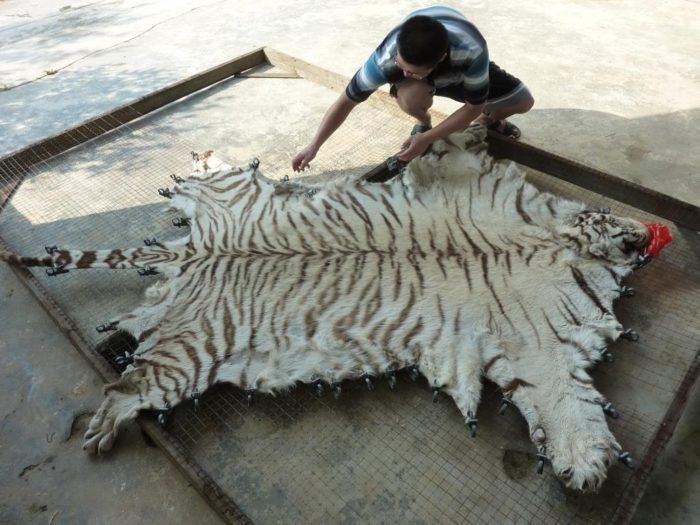China leadership holds future of wild tigers in its hands



Today (March 3), thousands of Chinese lawmakers and journalists will congregate in Beijing at the annual opening of the ‘two meetings’, or ‘liang hui’ – the plenary sessions of the National People’s Congress (China’s equivalent of a parliament) and the Chinese People’s Political Congress (the country’s top political advisory body).
Delegates will discuss new legislation while commentators speculate as to who among them will be the leaders of tomorrow. Coincidentally, today is also UN World Wildlife Day and it is significant to note that the Standing Committee of the National People’s Congress recently approved a new Wildlife Protection Law which came into force in China on January 1 this year.
As the meetings get underway it appears that, pursuant to the new wildlife law, a list is also being drawn up by the central State Forestry Administration (SFA) which will determine which protected wildlife species can be traded commercially within China.
As global attention turns to Beijing, the Environmental Investigation Agency (EIA) calls on China’s top decision-makers to take a global leadership role in ending demand for tiger parts and products by ensuring tigers are not on the list.
EIA is very concerned about the potential of the new Wildlife Protection Law to further open up commercial domestic trade in endangered species, including tigers (see a summary of EIA concerns here).

Tiger skin being processed at Xia Feng, China (c) EIA
EIA investigations have documented how China has been experimenting with a licensed domestic trade in captive-bred tiger skins under administrative regulations introduced in 2003 (see, for example, the 2013 EIA report Hidden in Plain Sight). The existing licensing system has not been subject to any effective monitoring and EIA investigations have revealed the system to be wide open to abuse.
The revised Wildlife Protection Law continues to allow commercial trade in parts and products of captive-bred specimens of nationally protected species which are included on a ‘utilisation list’ drawn up by the SFA. Although it is not clear when the utilisation list will be published, it is rumoured to be in preparation for imminent release.
EIA is very concerned that tigers and other species severely threatened by trade will once again be included on the utilisation list, which could seriously exacerbate trade in tiger parts and products. There are 5,000-6,000 tigers in farms and other facilities in China where tigers are bred for commercial purposes and many of them have been implicated in illegal trade in tiger parts and products.
Moreover, the revised Law states that forestry departments at the provincial level will be responsible for issuing production quotas and permits. Given that in 2015, the central SFA confirmed it was not able to monitor the legal trade in captive-bred tiger parts, the revised Law risks increasing the opportunities for a more poorly regulated legal trade in tigers and other species threatened by trade.
These provisions threaten to further entrench a culture of commodification of endangered species and risk the survival of wild populations by stimulating demand for wildlife products, complicating law enforcement, undermining demand-reduction efforts and presenting opportunities for laundering of wild-caught specimens and their derivatives.
Given that 2016 saw more tigers poached in India than in any other year since 2001 – killed to supply Chinese demand for skins, bones and other body parts – the fewer than 4,000 tigers remaining in the wild simply cannot withstand these threats.
With the hugely positive news in December 2016 that China will phase out its commercial ivory market by the end of 2017, the Chinese Government has shown it is willing to take the action needed to save a species threatened by trade. EIA calls on China to continue to show conservation leadership and take urgent action to ensure that tigers and other species listed on CITES Appendix I will not be included on the ‘utilisation list’.
EIA asks our supporters and the international community to send a clear message to China that, in the interests of wild tigers, commercial trade in tigers and their parts and products should not be allowed.
Please email or tweet the Chinese Embassy in your country to express your concern and ask that tigers and other CITES Appendix I species are not included on the wildlife ‘utilisation list’.
• Additional background information about China’s new Wildlife Protection Law is available here.